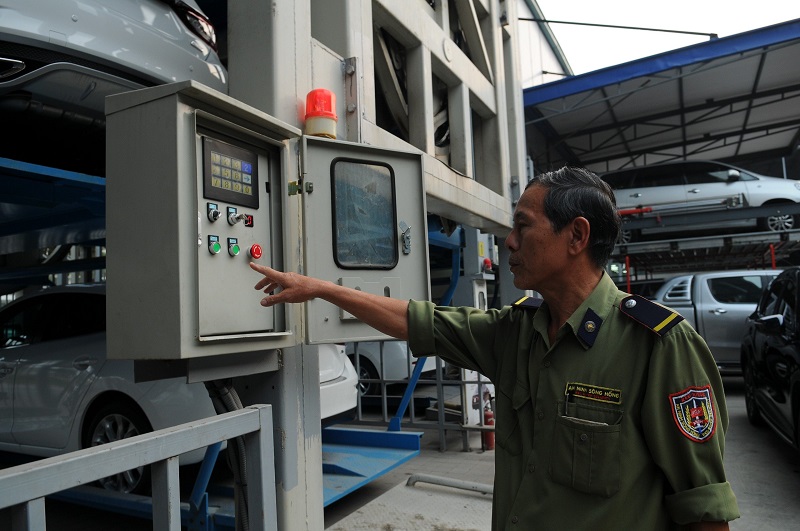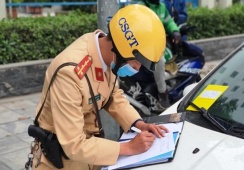
According to the Hanoi Department of Transport, the capital plans to build over 1,600 public parking lots, including 73 underground areas. By November 2023, only 18 parking lots were operational. Architect Dao Ngoc Nghiem, Vice Chairman of the Vietnam Association for Urban Planning and Development, talks to The Hanoi Times about the problems and solutions to speed up the construction of parking lots in the capital.
| Architect Dao Ngoc Nghiem, Vice Chairman of the Vietnam Association for Urban Planning and Development. |
What have the Hanoi authorities done to develop parking lots?
Following the issuance of the 1992 Capital General Plan, the Hanoi government approved a master plan in 1996 to renovate existing parking lots and use sidewalks as temporary parking areas. In 1998, the city government amended the Capital General Plan to 2020. Accordingly, Hanoi planned to allocate each person 25m2 of traffic areas, reserve 25% of the urban land area for the construction of traffic infrastructure (including parking facilities), and provide an adequate network of parking lots.
Based on the general planning, Hanoi has developed a citywide plan to position local parking lots. For example, Dong Da district would have 11 public parking lots with a total area of nearly 5.5 ha, while the area of parking lots for Hoan Kiem, Hai Ba Trung, and Tay Ho districts ranged from 2.3 ha to 12.7 ha. Parking lots were also considered an obligatory component in the development plans of new urban and residential districts. At that time, local authorities had the idea of opening underground car parks and allocating a part of public parks for car parking.
After the expansion of the administrative boundaries in 2008, the Hanoi government in 2011 developed a new General Planning until 2030. In the updated general plan, the city authorities mulled to improve the traffic infrastructures, especially parking facilities. Accordingly, local authorities planned to develop underground parking in public parks, gardens, and building complexes. In addition, the plan mentioned the creation of common parking lots during the renovation of industrial facilities and government buildings.
| Puzzle Parking is a multi-story car parking model in Hanoi. Photo: Pham Hung/The Hanoi Times |
In 2013, the city's People's Council adopted a resolution on the development of public transportation, and the construction and operation of parking lots and bus stations.
What are the reasons for the slow development of parking facilities? What have we learned for the future?
Hanoi's transportation system was not able to keep up with the growth in population and vehicles. According to international practice, a city should reserve about 20-25% of its natural land for construction of transport infrastructure, of which 3-4% should be for static facilities. At present, Hanoi has set aside only 12% of the total land area for traffic construction, and static buildings occupy 0.3% of the figure or 10% of the required area.
| Driver checks available parking spaces in Hoan Kiem District via mobile app. Photo: Pham Hung/The Hanoi Times |
In addition, for a city of more than one million people, public transport vehicles must account for at least 50% of the total. But in the case of Hanoi, a city of 10 million people, public transport vehicles account for only one-fifth. This means we need to increase the number of public vehicles and reduce the number of private vehicles to ease the pressure on parking spaces.
Another reason is the lack of a suitable mechanism to attract private investors to parking area projects.
It can be said that urban development plans are the foundation for the city's implementation of car-keeping projects. The existing shortage of parking spaces is caused by the lack of cooperation between government agencies in the city and the absence of special policies to attract private investment.
| A parking lot near Hoan Kiem Lake in Hanoi. Photo: Pham Hung/The Hanoi Times |
What are the solutions to accelerate the construction of parking facilities?
We need to review all transportation-related policies based on current practices and develop specific projects to build road and parking infrastructure. Hanoi currently has more than 120 parking facilities, while the city will need more than 1,600 facilities by 2030. This is a challenge, and the capital needs strong measures to address it.
In addition, new regulations on underground development should be explored to find new ways to attract investors.
The city government should also pay attention to public transportation projects, such as metro lines and facilities associated with the transit-oriented development (TOD) model. Communication is the key to winning people's trust and support. We should make a practical plan to control the number of individual vehicles.
Thank you for your time!
.jpg)




